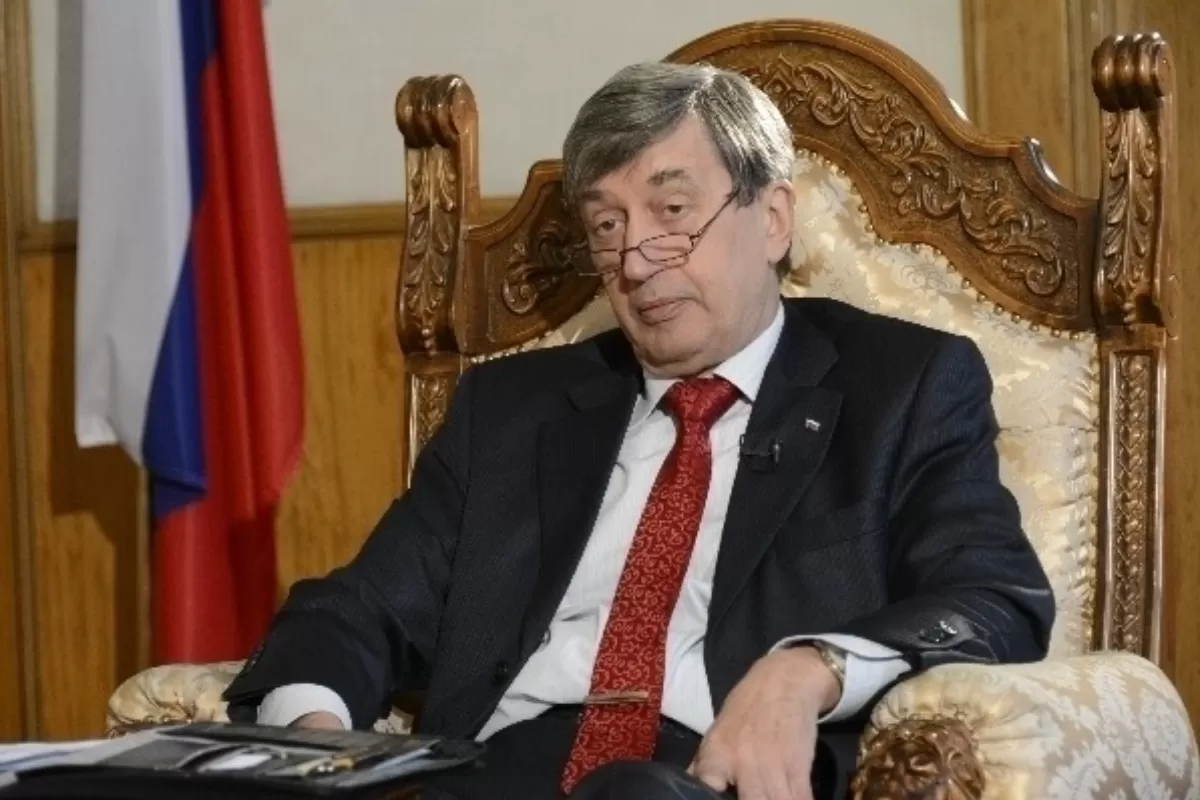
NEWS: Russia’s ambassador to Bucharest, Valery Kuzmin, told Canal 33 in an interview that Russia “is trying to tell the historical truth to today’s audiences”, referring to the events in Europe during the Second World War.
“Of course, you know that, particularly in Europe, not just Poland, but also the Baltic States are pretending to be the victims of the Soviet Union, of Soviet occupation. […] In fact, we believe it is scientifically and historically inaccurate to use the same definitions when referring to the war and post-war period. It’s a well-known propaganda trick. Now it is called hybrid warfare or strategic communication. Why? Because it replaces certain concepts.
Let’s take Baltic States for instance, or Ukraine. They were all part of the Soviet Union, but there were so many other countries occupied by Germany. Was that truly an occupation, what they say today about the Soviet Union in Eastern Europe, if we compare it to the territories occupied by Nazi Germany?”, Kuzmin said.
Moreover, the Russian diplomat described the NATO troops stationed in Europe in agreement with NATO members and as a result of clear military alliances as occupation forces.
“First of all, after the war (WWII, e.n.) Western Europe was equally occupied by Western powers. Germany and other states continue to be under occupation. American and British troops are still deployed to Germany, for instance. Soviet troops have pulled back. So who are these forces in Europe targeting today?”, Kuzmin said.
Referring to Romania, Ambassador Kuzmin claims Bucharest attacked the Soviet Union.
“I know that on June 22, 1941, half a million Romanian troops, accounting for the bulk of the military force on the so called eastern front, attacked the Soviet Union, my homeland. We are closely familiar with all the myths surrounding this event in your version of history. But it’s your choice”, Kuzmin says.
The interview with Valery Kuzmin was partially redistributed and shared by websites with overt pro-Russian sympathies such as inprimalinie.org sau vestidinrusia.ro.
NARRATIVES: The Soviets did not invade Eastern Europe jointly with Nazi Germany. The invasion was not followed by a military occupation of these countries and their subsequent annexation, contrary to their will and under military threat from the Soviet Union. Romania is an aggressor state that declared war on the Soviet Union. To this day, Europe is occupied by American troops.
BACKGROUND: Russia is trying to camouflage and justify its military aggressions in the Black Sea area, invoking the presence of American forces in Europe. This type of rhetoric has been continuing ever since 2008 (the war in Georgia) and since 2014, with the annexation of Crimea and Russia’s covert involvement in the conflict in Donbass in eastern Ukraine.
For that matter, Kuzmin calls the annexation of Crimea “a propaganda trick”.
At diplomatic level, Moscow is trying to bolster and legitimize the existence of military influence spheres during the Cold War and to present Russia not as an aggressor state, but as a counterbalance to the American military influence in Europe.
Also part of this effort is also the endorsement of alternate accounts of World War II, where the USSR is depicted exclusively as a victim of aggression, although prior to Nazi Germany’s invasion it had also been an aggressor: it invaded the Baltic States, Bessarabia and Northern Bukovina and attacked Poland and Finland.
This is also an attempt at deriding Western powers and their role in the fight against Nazi Germany.
PURPOSE: To try to change public perception in Romania regarding the West and the need to strengthen national security; to diminish public vigilance over Russia’s increasingly militarized presence in the Black Sea region. Russian diplomacy is also trying to create mistrust in Romania’s political and military allies (EU and NATO) particularly against the United States, Romania’s top strategic partner in the region.
Such negative messages are distributed to all NATO and EU members.
WHY THE NARRATIVES ARE FALSE: The Russian diplomat is trying to elude certain historical accounts which led to some of the major reasons behind the Second World War. For instance, he doesn’t even mention the Stalin-Hitler pact (also known as Molotov – Ribbentrop), signed on August 23, 1939 in Mosco and the secret protocol it included. The pact signatories at the time divided among themselves European countries which they subsequently invaded and occupied. This secret deal led, a week later, to the invasion of Poland and triggered the start of World War II on September 1, 1939.
Paradoxically, one of the architects of the Convention for the definition of aggression, signed on July 4, 1933, was Russia’s Foreign Minister, Maxim Litvinov. The aggressor was defined was defined as any party who declared war, or invaded a territory (even without declaring war) of another country. According to the document, the aggressor supports and carries out subversive actions on the territory of another state.
As regards Baltic States, to this day Russia claims it liberated, not invaded these countries. In fact, the Soviet Union invaded Lithuania, Latvia and Estonia in the strongest sense of the word in mid-June, 1940 Then it triggered a series of deportations of “enemies of the people” from these countries. Starting June, 1941, Baltic States entered Nazi occupation, and from 1944 until 1991 they were again occupied as an integral part of the USSR.
With respect to the incorporation of Bessarabia and northern Bukovina, after an ultimatum issued b Moscow on June 26-27, 1940 to the Government in Bucharest, Kuzmin doesn’t mention anything about the threat of a military invasion of Romania. This is what actually happened the moment Soviet troops entered Bessarabia as early as June 28, 1940. Before the Romanian army and administration could withdraw on the other side of the Prut River. Conversely, Kuzmin selectively mentions only June 21, 1940, when Romania enters the war alongside Germany to reconquer these territories. Kuzmin describes this action as an act of aggression against Russia, his “homeland”.
OFFICIAL REACTIONS: There have been none.


